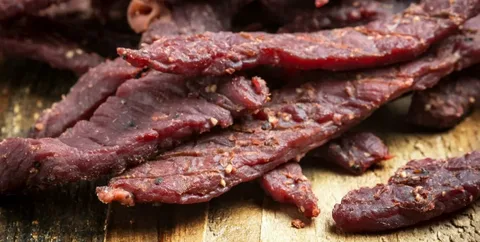Biltong: A Perfect Balance of Flavor and Simplicity
- Admin

- Jan 24
- 3 min read

Biltong is a simple yet flavorful snack that has gained recognition for its unique preparation and taste. Known for its chewy texture and distinct seasoning, it is a food that transcends being just a snack, offering endless possibilities in how it can be enjoyed and incorporated into meals. Whether eaten independently or used as an ingredient in creative recipes, biltong consistently delivers a satisfying experience.
What Makes Biltong Unique?
Biltong is made using a straightforward process of curing and air-drying meat. What sets it apart is its emphasis on maintaining the meat's natural flavor, enhanced by a minimal yet effective combination of spices. Traditional seasonings often include salt, coriander, black pepper, and a touch of vinegar, which not only preserves the meat but also contributes to its signature tangy taste.
The drying process is critical, as it determines the texture and intensity of flavor. Biltong can be dried to varying degrees, from soft and tender to firm and chewy, allowing for various preferences. Unlike other dried meat products, biltong's preparation methods focus on simplicity and quality, keeping additives and artificial ingredients to a minimum.
A High-Protein Snack with Nutritional Benefits
One of the standout features of biltong is its high protein content, making it an excellent choice for individuals seeking a nutritious and filling option. Packed with essential nutrients like iron and zinc, biltong contributes to overall energy levels and immune function. Its low carbohydrate and sugar content is suitable for low-carb and keto diets.
Athletes and fitness enthusiasts often turn to biltong as a convenient source of protein, ideal for supporting muscle recovery and maintaining energy throughout the day. Its portability and long shelf life make it a practical snack for active lifestyles.
Using Biltong in Everyday Cooking
Biltong is more than just a snack; it is a versatile ingredient that can enhance various dishes. For example, finely sliced or shredded biltong can be sprinkled over salads, providing a meaty texture and depth of flavor. It also works well as a topping for baked potatoes or added to omelets and scrambled eggs for a protein-rich breakfast.
Incorporating biltong into soups and stews is another way to enjoy its rich, savory taste. Cooked with vegetables and broth, it adds a smoky, complex element. Biltong can even be blended into dips or cream cheese spreads for an appetizer with a unique twist.
Perfect Pairings for Biltong
Biltong pairs exceptionally well with a variety of drinks and side dishes. Its robust flavor complements the bold notes of red wine or the crisp, refreshing taste of a cold lager. Pairing it with iced tea or sparkling water with citrus can balance its savory profile for non-alcoholic options.
On a charcuterie board, biltong holds its own alongside cheeses, crackers, and dried fruits. The combination of salty, sweet, and tangy elements creates a well-rounded tasting experience.
A Timeless Food for Any Occasion
Biltong is as much a part of casual, everyday moments as it is a feature of celebrations. Whether packed for a hike, served at a social gathering, or enjoyed as a quick snack during a busy day, it offers a reliable source of nourishment and flavor. Its ability to fit seamlessly into various settings has made it a beloved food for generations.
Conclusion
Biltong's simplicity and flavor make it a standout choice for anyone who appreciates quality food. From its role as a high-protein snack to its recipe adaptability, it continues to be celebrated for its versatility. Its rich taste and straightforward preparation make it a timeless favorite in kitchens and on-the-go lifestyles.




Comentários